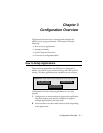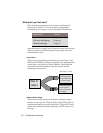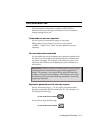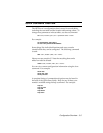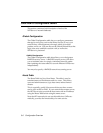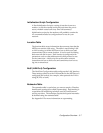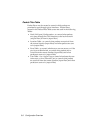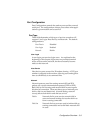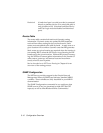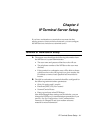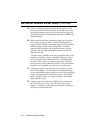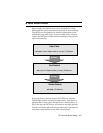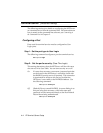Configuration Overview 3-9
Port Configuration
Port Configuration controls the modem ports and the external
serial port. The configuration of these ports reflect what appli-
cations a given modem can be used for.
Port Type
Three fields determine which type of services a modem will
support: User Login, Host Device, and Network. The default
configuration is:
Host Device Disabled
User Login Enabled
Network Dial In
User Login
A user login port services login users. As explained at the
beginning of this chapter, login users are provided terminal
access to hosts on the network, but do not actually become
nodes on the network.
Host Device
Host device ports are used for IP modem sharing. A TCP port
number is assigned to the modem, allowing users and applica-
tions to talk directly to its command line.
Network
Network ports are used for routing network (IP and IPX)
packets via a serial communications protocol (PPP or SLIP).
Both LAN-to-LAN routing and network dial-in users require
this kind of connection. There are three types of network port:
dial in, dial out and hardwired. A fourth setting, network
twoway, allows both dial in and dial out service.
Dial In Network dial in ports service network dial in
users and remote routing devices that dial in to
form a routing connection.
Dial Out Network dial out ports are used to initiate dial up
routing connections and to dial back network dial
in users.



